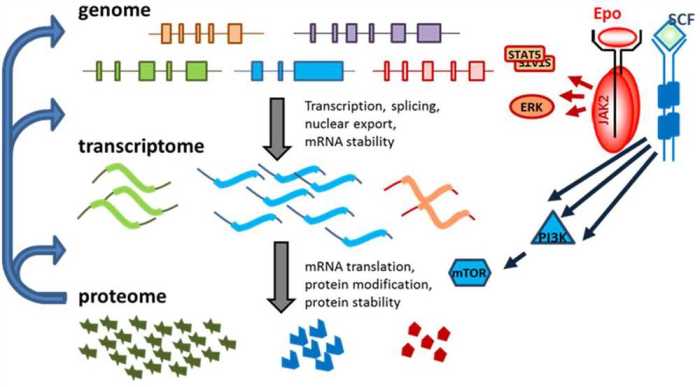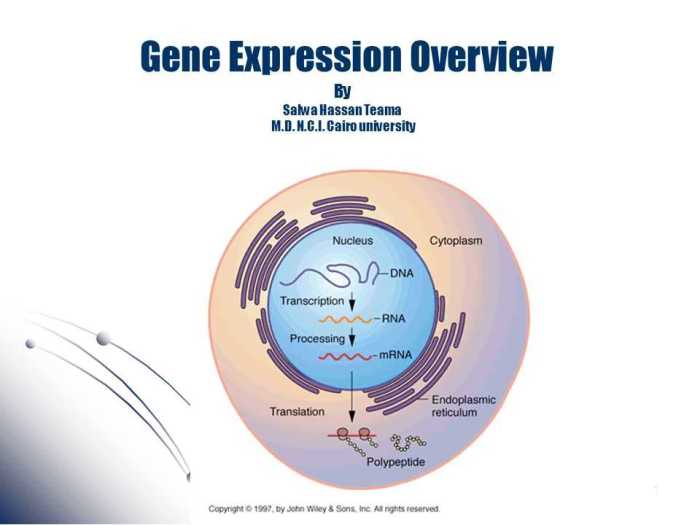Gene expression translation pogil answer key – Unveiling the intricate processes of gene expression and translation, this POGIL answer key serves as an invaluable resource for students embarking on a journey into the molecular realm. By deciphering the central dogma of biology, we unravel the mechanisms that govern the flow of genetic information from DNA to RNA to proteins, the building blocks of life.
Through a comprehensive exploration of transcription, translation, and their significance in protein synthesis, this answer key empowers students with a profound understanding of these fundamental processes. POGIL activities, designed to foster inquiry-based learning, provide hands-on experiences that reinforce these concepts, making them both accessible and unforgettable.
Gene Expression and Translation

The central dogma of molecular biology describes the fundamental process of gene expression and translation, where genetic information encoded in DNA is utilized to synthesize proteins.
Transcription is a crucial step in gene expression, where the DNA sequence of a gene is copied into a complementary RNA molecule. This RNA molecule, known as messenger RNA (mRNA), carries the genetic information from the nucleus to the cytoplasm, where protein synthesis occurs.
Translation is the process of converting the mRNA sequence into a chain of amino acids, which are the building blocks of proteins. Ribosomes, large molecular machines located in the cytoplasm, facilitate translation by reading the mRNA sequence and assembling the corresponding amino acids.
POGIL Activities

Process Oriented Guided Inquiry Learning (POGIL) is a student-centered teaching approach that promotes active learning and inquiry-based understanding of scientific concepts.
POGIL activities on gene expression and translation can enhance student understanding by:
- Engaging students in hands-on exploration of the processes involved
- Facilitating peer collaboration and discussion
- Providing opportunities for students to apply their knowledge to novel situations
Examples of POGIL activities on these topics include:
- Simulations of transcription and translation processes
- Analysis of real-world data on gene expression patterns
- Design of experiments to investigate factors affecting protein synthesis
Answer Key Analysis: Gene Expression Translation Pogil Answer Key
The answer key for a POGIL activity on gene expression and translation can be organized using an HTML table with the following columns:
- Question
- Correct Answer
- Explanation
- Additional Resources
The rationale for this design is to provide a clear and structured framework for students to review their answers, understand the correct concepts, and access additional resources for further learning.
Classroom Implementation
Effective implementation of POGIL activities on gene expression and translation in the classroom involves:
- Clear introduction of the concepts and objectives
- Provision of necessary background information and resources
- Facilitating student discussions and guiding their inquiry
- Encouraging peer collaboration and teamwork
- Assessment of student understanding through formative and summative assessments
Real-World Applications

Understanding gene expression and translation has wide-ranging applications in various fields:
- Biotechnology:Genetic engineering techniques utilize gene expression and translation to modify organisms for specific purposes, such as producing pharmaceuticals or improving crop yields.
- Medicine:Diagnosis and treatment of genetic diseases involve understanding the regulation and malfunction of gene expression.
- Agriculture:Genetic modifications in plants and animals can enhance traits such as disease resistance, nutritional value, and growth efficiency.
Research in these areas has led to significant advancements in healthcare, agriculture, and biotechnology, improving our lives and shaping the future of science and technology.
Questions Often Asked
What is the central dogma of molecular biology?
The central dogma describes the flow of genetic information from DNA to RNA to proteins, providing a framework for understanding gene expression and protein synthesis.
How does transcription contribute to gene expression?
Transcription is the process of copying the genetic information from DNA into RNA, creating an intermediary molecule that carries the instructions for protein synthesis.
What is the role of translation in protein synthesis?
Translation is the process of converting the genetic code in RNA into a sequence of amino acids, ultimately forming the building blocks of proteins.